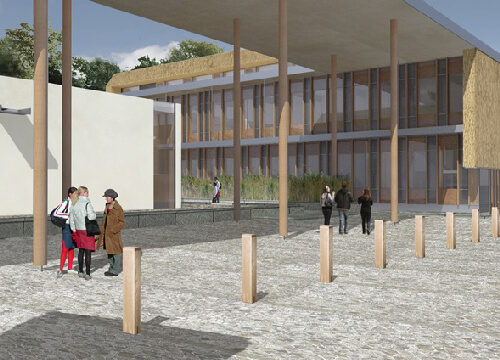Adopting a more collaborative approach to risk mitigation
Adopting a more collaborative approach to risk mitigation
by Patrick Watson
For far too long, the UK construction industry has suffered from the inability of those overseeing the procurement process at the start of a build project to coordinate and consolidate both materials and labour. Traditionally, within the building industry, where projects are geographically distant from one another and unique in design, this has led to a fragmented supply chain. There is invariably little spend on new ways of working or product development to reduce overall procurement costs and as such, inefficiencies in the build process prevail.
But by reassessing the supply chain configuration so that the prime contractor is put in a position where they have full responsibility for the completion of a project and where they manage all design and construction activity, this has the potential to achieve a more cohesive and less fragmented build process. Building on the well documented principles of the Building Down Barriers report (1999), it is essential that collaboration lies at the heart of the build and that this is properly facilitated through strong leadership, training and incentives. By engaging with all those involved in the supply chain at the outset – from design through to development – such as key suppliers, subcontractors and so forth, problematic issues can be kept to a minimum and dealt with before construction even begins.
3PM’s latest involvement as Project Mentor for the team working to deliver the University of East Anglia’s new Norwich Research Park (NRP) Enterprise Centre demonstrates this collaborative approach in action. The centre is set to become an exemplary low carbon project, which itself will house a new Centre for the Built Environment.
The project is being part-funded by the European Union through the European Regional Development Fund (ERDF), in addition to funding from UEA, Biotechnology and Biological Sciences Research Council (BBRSC), Norwich Research Park (NRP) and BRE (Building Research Establishment).It will not only aim to become a world class building of sustainable credentials designed to stimulate commercial enterprise, but it’s creation will aim to establish a new benchmark for procurement.
We have engaged with the client, Adapt and the University of East Anglia, as well as local SME’s in the Norwich area to help source materials for the development of the Enterprise Centre. To ensure the client needs are closely considered, resource is sought nearby and everyone is aware of their role on the project. This close ‘partnering’ idea is based on the MoD/industry partnering concept, we are working with Morgan Sindall as the Single Point Delivery partner, which is generally recognised as a method for demonstrating that successful collaboration is not about formulaic words and compromise; it is about working together in a climate of openness and trust. The point of this whole approach is to ensure enhanced profitability for the team and a high quality finish that will deliver long-term cost benefits over the building’s lifespan.
For example, on the UEA scheme it was apparent, as is normal at this stage that during the briefing stage, the End user desires & requirements were collectively unaffordable. The challenge for the Mentor and the team was to ensure all parties understood the commercial reality but without the end users getting dispirited in the process.
It was necessary for all of the core management team to fully understand the reality of the situation. By creating an environment where views can be openly aired and discussed in a safe manner, these differences can be highlighted ensuring the team focus remains on resolving the issues. The UEA project has also adopted Neutral Risk Monitoring, a service provided by rlf|3PM and delivered in partnership with a company called ResoLex which helps projects with communication, supports collaborative working and reduces risk.
The purpose of this innovative service is to provide a safe and confidential arena in which individual project team members can feedback information about their perceptions of different project attributes.
On first inspection, many projects assume that this already exists through traditional reporting mechanisms and team meetings. However, from experience, we have found that this reporting tends to concentrate on historical fact, rather than the perception of people who have many years of valuable project experience. So what we concentrate on are gut feelings. We capture good news and any concerns, monitoring them over time, across delivery teams, across mutual goals and risks, to allow the team to explore emerging issues, changes in working practices, inter-team differences while they are current and before they become unchangeable historic facts.
The reports are already highlighting some issues and different perceptions. Our challenge as Mentor is to ensure the teams remain aligned in tackling these challenges.
Read more on the UEA Project here

